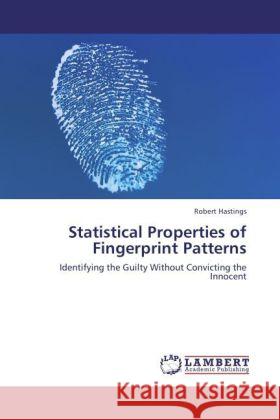Statistical Properties of Fingerprint Patterns » książka
Statistical Properties of Fingerprint Patterns
ISBN-13: 9783848400393 / Angielski / Miękka / 2012 / 236 str.
Since the first use of fingerprints for identification over 100 years ago, the statement that "Every fingerprint is unique" has become almost an article of faith. However this assertion has come under scrutiny following several instances of mistakes in identification by law enforcement agencies. Given two fingerprints that appear to match, the question is how likely is it that this is a chance resemblance between different fingers? It is necessary to define what is a "match", and this in turn leads down the path of deciding how to represent what the fingerprint examiners refer to as the "finger ridge pattern". Two images of a print taken from the same finger will never be identical at the pixel level, but the analyst's task is to extract the essential features in order that meaningful print comparisons may be made. This book presents some important results on the spatial distribution of the features used in identification, information that is required in determining the "uniqueness" of an observed pattern. Ways of representing the essential ridge pattern are discussed, including the fairly new concept of specifying the pattern in terms of the phase of a periodic wave train.











